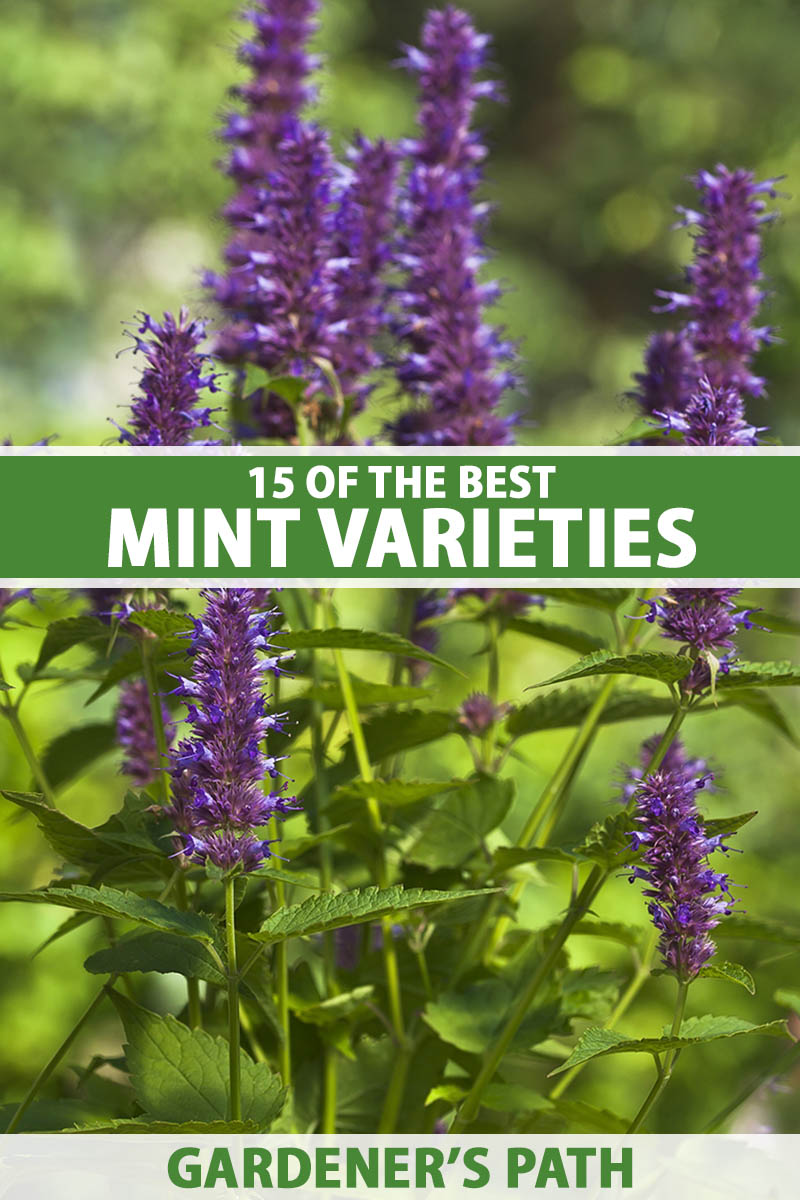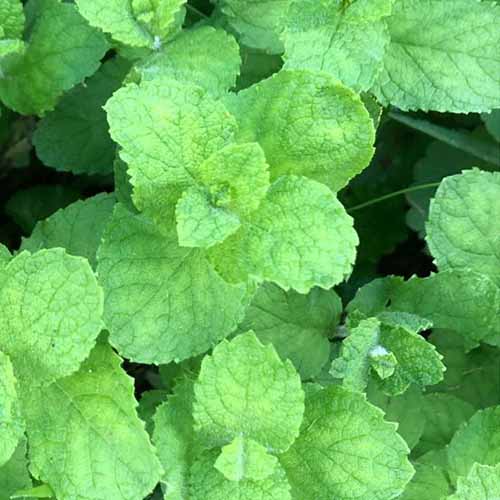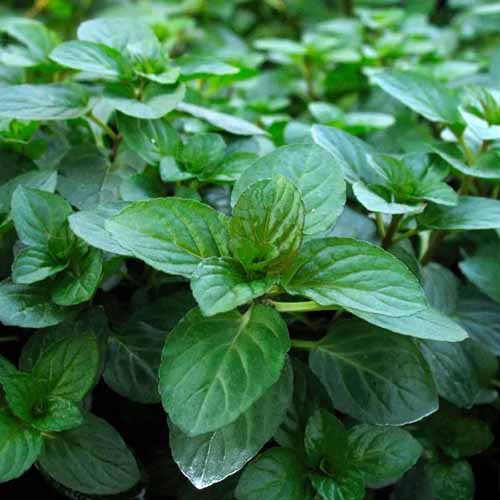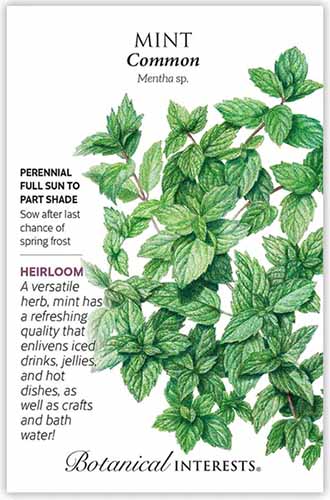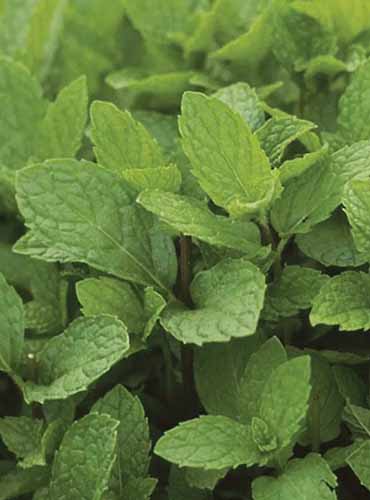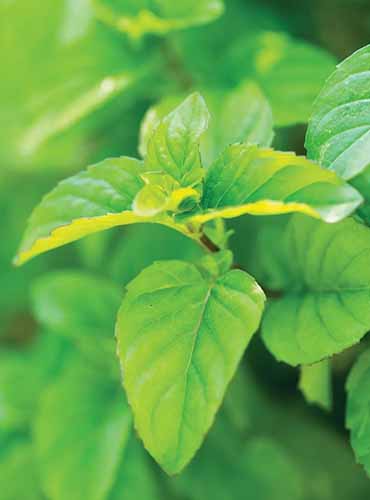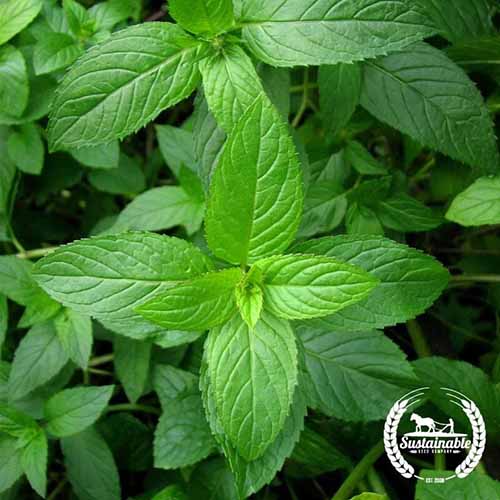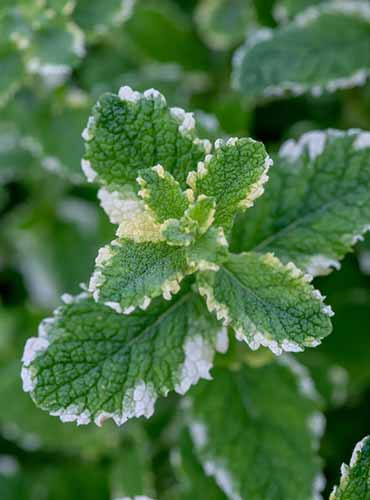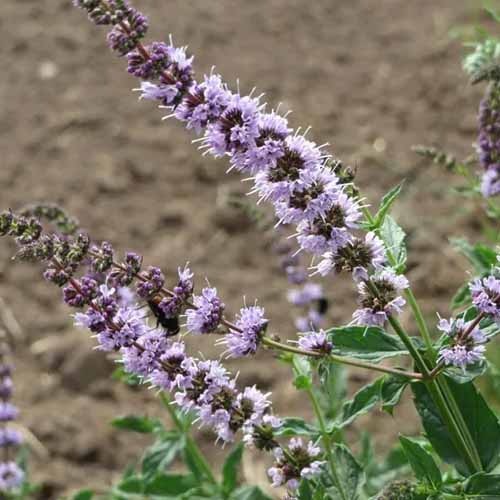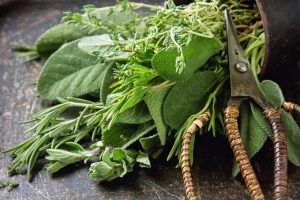With its bright, fresh flavor and zesty fragrance, mint has long been a favorite herb loved for its versatility in the garden and in the kitchen – and there are plenty of attractive varieties to choose from.
In the kitchen, the leaves and flowers have bright flavors that are sweet and cooling, and widely used as a garnish, in hot and cold beverages, and to flavor candies, cocktails, desserts, jellies, mocktails, salads, sauces, and vegetables.
The various species and cultivars of the Mentha genus have aromatic, dark green leaves and develop terminal spikes of small flowers in shades of mauve, pink, purple, and white that are highly attractive as ground covers, in kitchen potagers, or in garden planters.
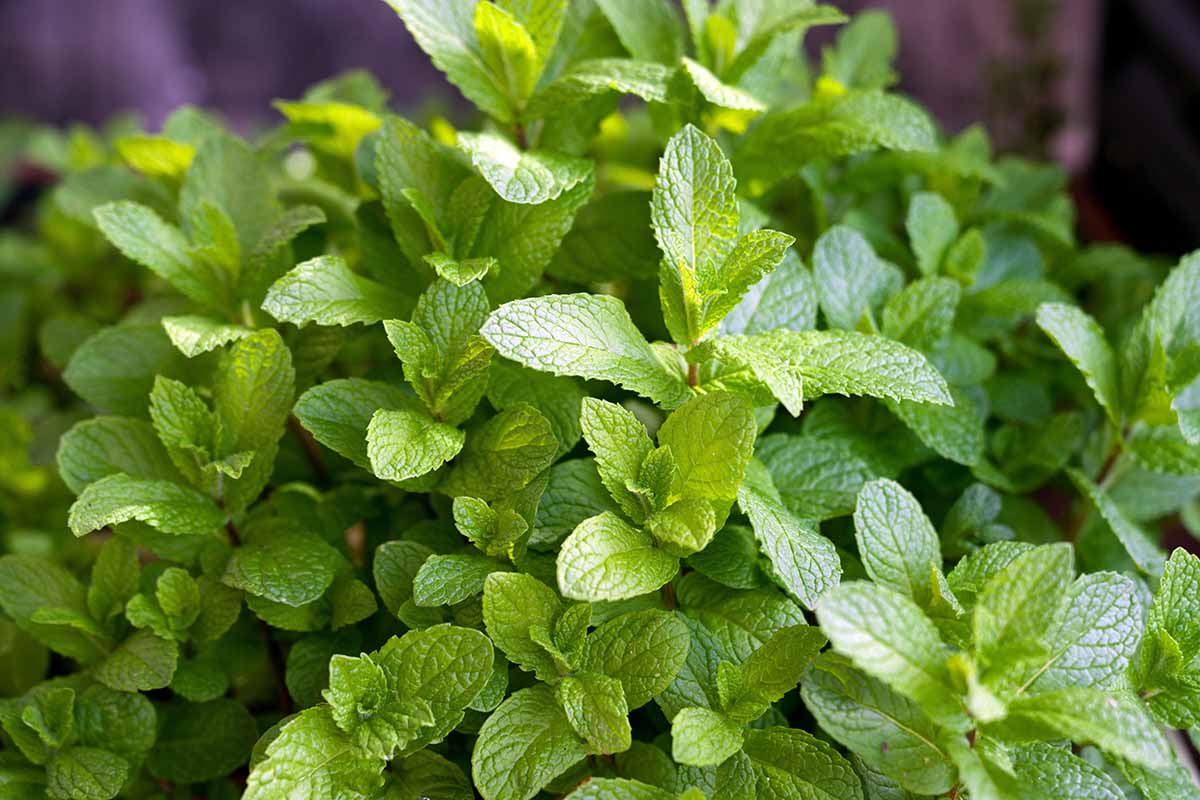
We link to vendors to help you find relevant products. If you buy from one of our links, we may earn a commission.
Hardy and vigorous, Mentha varieties are easily cultivated and spread readily via runners, forming thick, fragrant clumps when allowed to grow freely.
However, some gardeners find their robust spread to be a bit too vigorous and keep them in check by planting in containers or bordered within landscape barriers or raised beds.
Most varieties require similar growing conditions of full to partial sun with moist, humus rich, and well-draining soil. You can read more about how to cultivate mint in our growing guide.
They aren’t bothered by deer as their strong scent is a deterrent to the munching herbivores!
Many varieties have similar flavors and fragrances, but each has its own unique subtleties and characteristics – so be sure to choose the types that suit your personal tastes for cooking and growing.
Are you ready for the cool, sweet flavors of your own refreshing Mentha patch? Then let’s explore 15 mint varieties for the garden and kitchen!
Here’s a peek at what’s ahead:
Best Mint Varieties for Your Garden
1. Apple
Notable for its light green leaves with a rounded oblong shape, apple mint, M. suaveolens, has a crisp, fruity taste and fragrance that makes it a favorite type for flavoring foods and drinks such as baked goods, frozen treats, salads, and beverages.
Plants grow 12 to 24 inches tall and wide, and produce pretty terminal spikes of small pink to white flowers in summer, attracting hordes of bees, butterflies, and other pollinators. Hardy in USDA Zones 5 to 9.
Live organic plants in two and one-half inch pots are available at Walmart.
Check out our guide to learn more about growing apple mint.
2. Chocolate
Sweetly addictive, M. × piperita f. citrata ‘Chocolate’ is loved for its sweet, chocolatey bouquet and strong, cool flavor for dishes and drinks such as brownies, cake, ice cream, hot chocolate, milk shakes, shrubs, and pudding.
It has handsome, lance-shaped emerald green foliage with striking, dark burgundy stems and summer spires of purple blooms that pollinators adore.
Plants grow up to 24 inches tall and wide and are hardy in Zones 5 to 9.
You can find ‘Chocolate’ mint available at Nature Hills Nursery.
Learn more about how to grow chocolate mint in our guide.
3. Common
Unless they’re grown in isolation or cultivated in a greenhouse setting, the many Mentha species cross pollinate readily, which has resulted in oodles of naturally-occurring hybrid mint varieties with mysterious lineages.
But these hybrids still pack plenty of flavor, fragrance, and greenery for the garden and can be used in all culinary applications.
Hardiness varies, but plants are usually reliable in Zones 5 to 9.
You can find packets of 220 seeds available at Botanical Interests.
4. Corsican
Delightful for its ground-hugging habit, Corsican mint (M. requienii) has tiny, rounded leaves that form beautiful, fragrant mats with a strong, sweetly spicy scent when bruised.
Plants grow one to three inches tall and spread up to 12 inches, producing clusters of small mauve to pink flowers in summer.
Able to withstand light foot traffic, it makes a lovely aromatic selection for placing between pavers, growing as a ground cover, or spilling out of patio planters.
Packets of seeds can be purchased at Eden Brothers.
5. Kentucky Colonel
With a very sweet flavor, the dark green, textured leaves of M. spicata ‘Kentucky Colonel’ are a popular choice for baked goods, garnishes, herbal tea, jelly, and of course, iced drinks like juleps!
This vigorous cultivar makes a pretty, fragrant choice for planters and kitchen gardens, producing terminal spikes of pink flowers in summer.
Plants have a height and spread of 12 to 24 inches and are hardy in Zones 5 to 9.
Starter plants are available at Burpee.
6. Lemon
M. x piperita f. citrata ‘Lemon’ is noted for its aromatic leaves with a zesty lemon fragrance that makes a delicious herbal tea or a flavoring for cordial, fruit salads, jelly, and pesto.
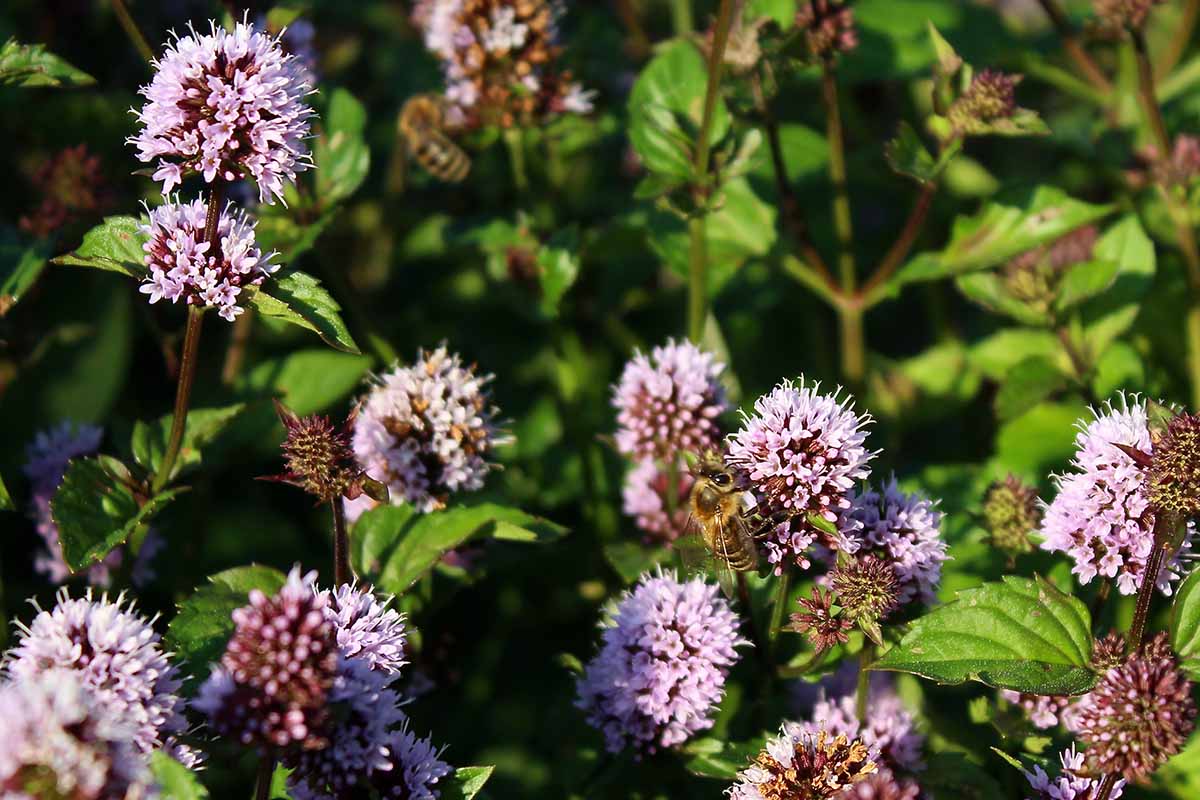
A vigorous grower, plants reach a height and spread of up to 18 inches and develop clusters of pretty mauve to purple flowers in summer that attract numerous pollinators.
Hardy in Zones 5 to 9.
7. Mitcham
With an enticing flavor and aroma, M. × piperita ‘Mitcham,’ aka English mint, has large, wrinkled leaves with a pleasant crunch, and very sweet flavor – a top choice for flavorful baked goods, jellies, and tea.
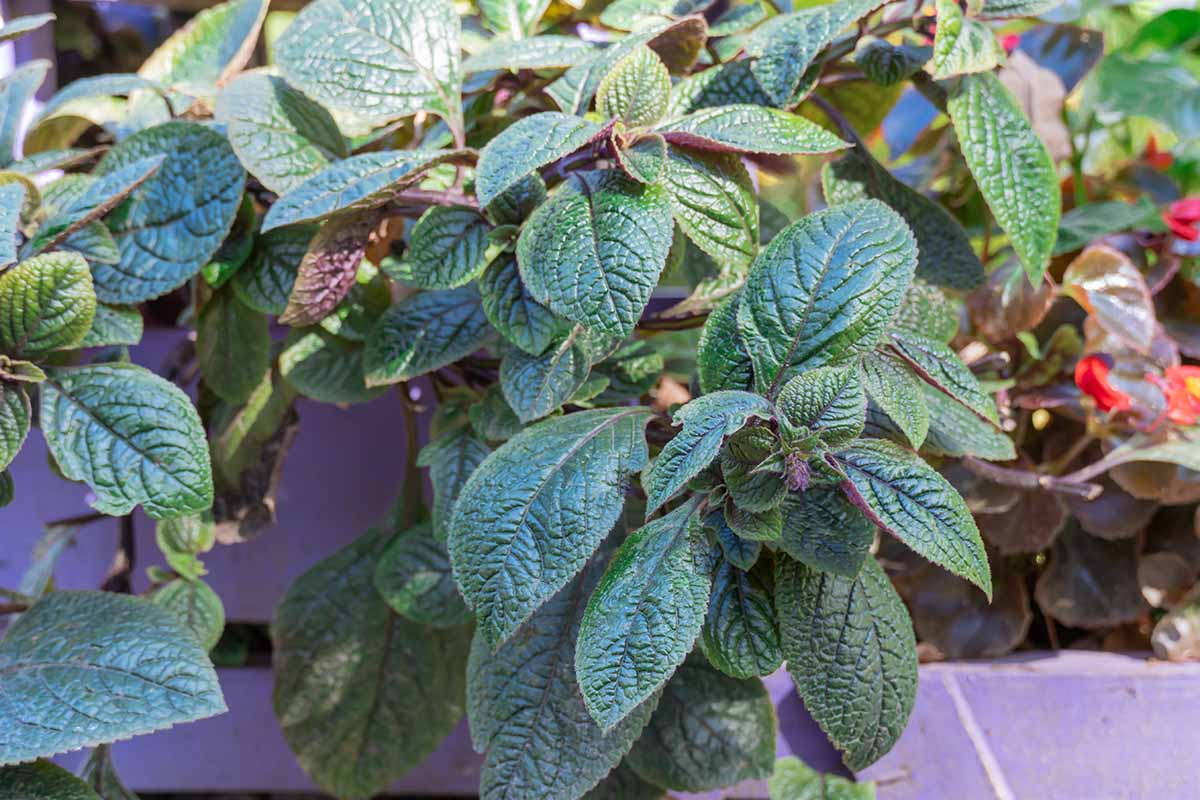
Beautiful, dense spires of tiny mauve to purple flowers form from summer into autumn, attracting bees and butterflies.
Give these plants some room as they grow up to 36 inches tall and spread up to 60 inches. Hardy in Zones 4 to 9.
8. Mojito
Hailing from Cuba, Mojito mint, M. x villosa, has large leaves with a mild flavor and citrusy notes that make it an excellent choice for hot and cold beverages as well as dipping sauces, marinades, and salad dressings.
Mojito mint plants grow up to 24 inches tall with a spread of up to 36 inches.
Spreading rapidly, it makes a fast-growing ground cover or can be cultivated in pots to keep growth in check. Hardy in Zones 5 to 9.
Starter plants are available at Burpee.
9. Orange
A citrusy delight, M. x piperita f. citrata ‘Orange’ has soft, rounded leaves with a lively, refreshing combination of orange and menthol notes that give bright, clean flavors to desserts, dressings, fruit or grain salads, herbal teas, iced drinks, and jelly – or anything chocolate!
Plants grow up to 24 inches tall and wide and produce lovely spires of mauve to pink flowers for attracting pollinators. Cultivate in planters and pots to curtail their vigorous growth. Hardy in Zones 5 to 9.
You can find starter plants available at Burpee.
10. Pennyroyal
Once widely used in traditional folk medicine, pennyroyal, M. pulegium, has small, narrow leaves and is now mostly grown as an ornamental for its strong scent and pretty tufts of mauve flowers. Note that these plants can be toxic if ingested in large doses.
A low-growing or erect creeper, pennyroyal grows six to 12 inches tall and can spread as much as 36 inches.
Pennyroyal is ideal as a ground cover or can be grown in planters to keep their spread contained. Hardy in Zones 6 to 9.
Seeds in a variety of packet sizes are available at True Leaf Market.
11. Peppermint
One of the best known mint varieties, peppermint (M. × piperita) is popular in the garden for its dark green foliage with a strong, crisp aroma that adds delicious, sweet flavor to hot or cold beverages, fruit dishes, pesto, sauces, salads, and chilled soups.
Plants grow 24 to 36 inches tall and spread up to 24 inches, producing gorgeous spires of mauve to purple flowers in summer.
Another robust grower that can take over the garden, cultivate in containers to manage its spread. Hardy in Zones 3 to 11.
Organic seeds in a variety of packet sizes are available at True Leaf Market.
Or you can purchase two-packs of three-inch pots at Walmart.
And don’t forget to check out our guide to growing peppermint for more information.
12. Pineapple
Grown for both culinary and ornamental purposes, pineapple mint, M. suaveolens ‘Variegata,’ is one of the most attractive varieties.
The soft, wooly leaves of jade green with cream or yellow edging have a sweet, tropical fragrance and make a tasty addition to cocktails, desserts, fruit salads, and punch.
Pineapple mint plants grow in clumps of 24 to 36 inches tall and wide and are slower growing than other varieties, making them suitable for beds or containers. Hardy in Zones 5 to 9.
Starter plants are available at Burpee.
13. Spearmint
Prized for its bright, refreshing flavor, spearmint, M. spicata, has narrow, lance-shaped leaves popularly used in cold and hot beverages, candies, desserts, dressings, salads, and sauces.
Plants grow 12 to 24 inches tall and wide and develop multiple spikes of soft mauve flowers in late summer.
Vigorous growth can make it aggressive in the garden but plants are easily cultivated in containers. Hardy in Zones 3 to 11.
Container-grown plants are available at Nature Hills Nursery and seeds in a variety of packet sizes can be purchased at Eden Brothers.
Learn more about growing spearmint in our guide.
14. Watermint
A water lover that grows mainly in wetlands, watermint or water mint, M. aquatica, has dark green, fragrant leaves that are used in baked goods, herbal teas, iced drinks, and salads.

Watermint grows 12 to 24 inches tall with a spread of 24 to 36 inches and bears rounded tufts of purple flowers in late summer.
An excellent choice for wet locations like bogs, creekbanks, and water gardens. Hardy in Zones 5 to 11.
15. Wild
Wild mint, aka Canada mint, M. canadensis, is a highly aromatic North American native with long and narrow dark green leaves that have a burgundy tinge.
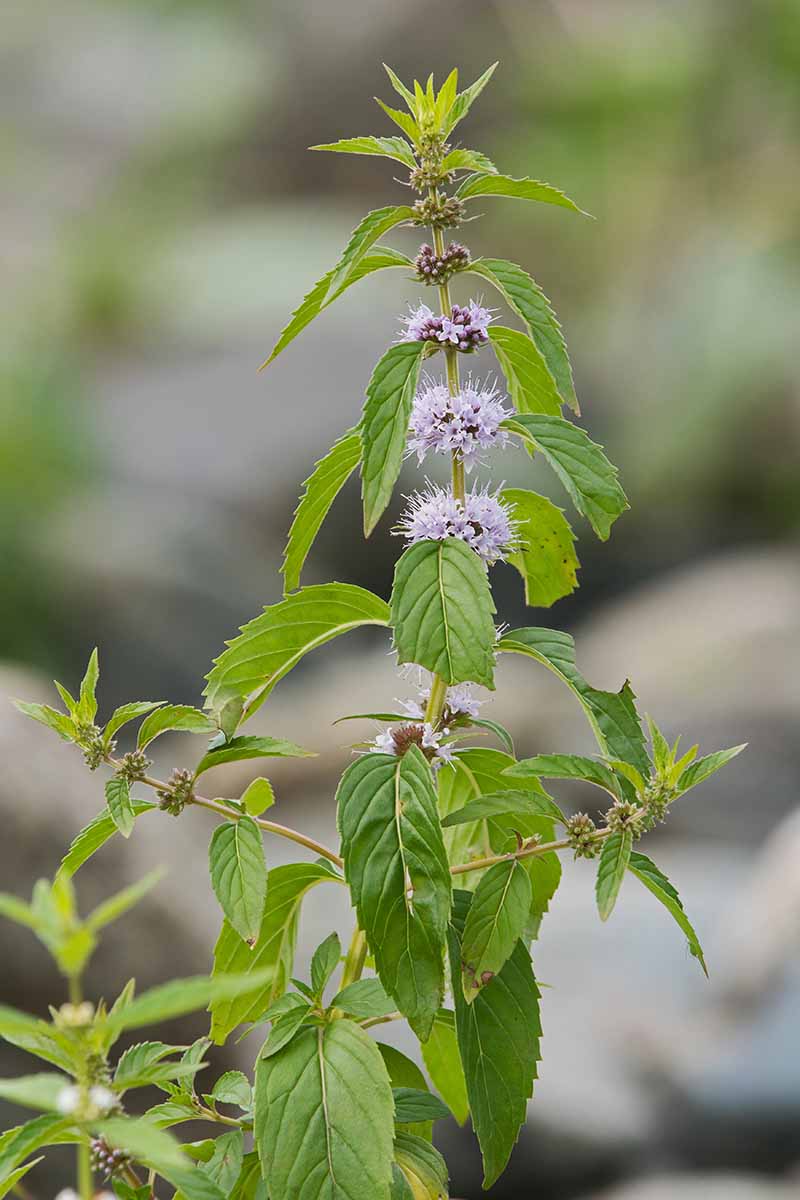
The sharp, cool flavor is distinctive and plants have a higher menthol content than most mint varieties.
A popular choice for foragers, it’s used in beverages, culinary applications, and folk medicine.
This species enjoys a wetter environment than most other varieties, and grows well beside creek banks, ponds, springs, and in moist meadows.
Plants grow 12 to 18 inches tall, spread up to 24 inches, and develop terminal tufts of pink to mauve flowers from midsummer onwards.
Cooly Refreshing
With its bright, cool, and refreshing flavor, mint is a favorite herb with many culinary uses.
Be sure to visit our sister site, Foodal, for an amazing selection of recipes – the mint and lime ginger splash is one of my favorite summer drinks to cool down on a hot summer day!
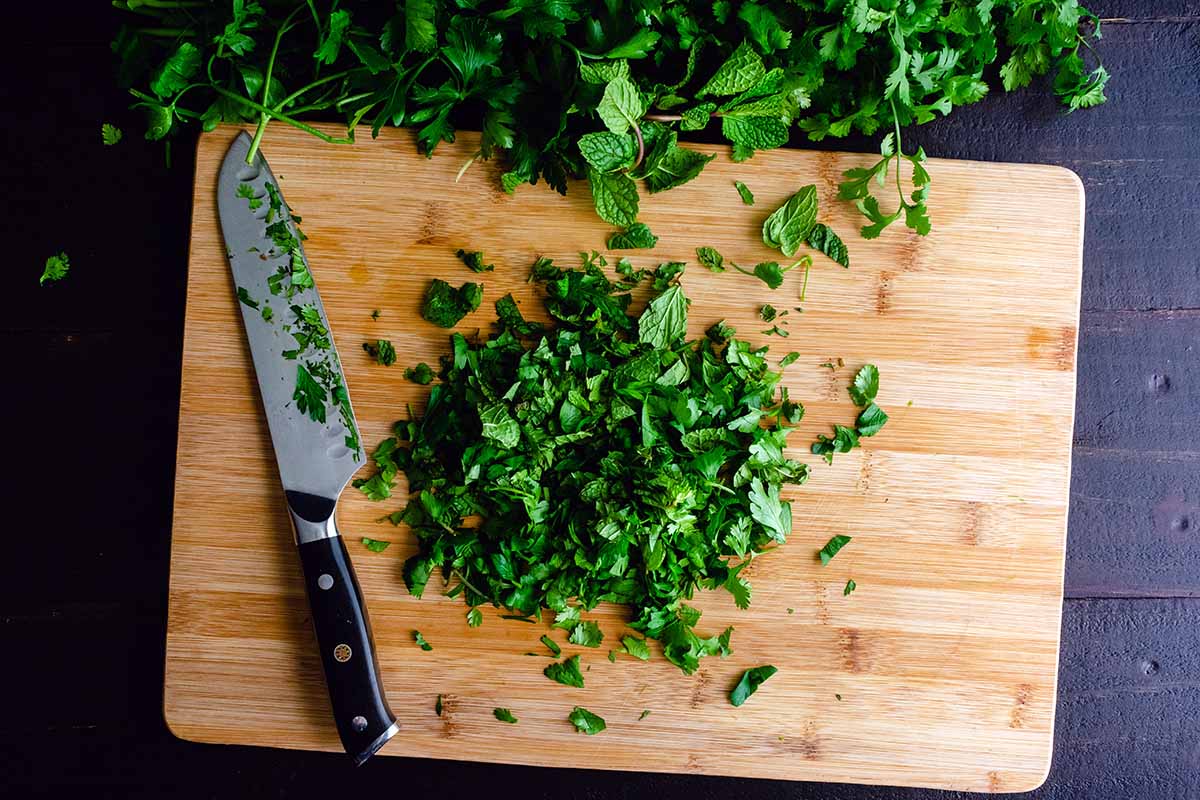
And in the garden, mint can be enjoyed as a fragrant, fast growing ground cover, a potted kitchen herb, or as a pretty ornamental for its pink to purple flower spikes that attract bees, butterflies, and other pollinators.
These easily cultivated perennials can spread aggressively, but you can still enjoy growing them because they make excellent container plants, which is an easy way to control their vigorous growth.
And with numerous species and cultivars to choose from, there are plenty of fragrant, flavorful types to cultivate and enjoy!
How do you folks use mint in the garden or kitchen? Let us know in the comments section below.
For more information about the care and cultivation of mint, add these articles to your reading list next:
